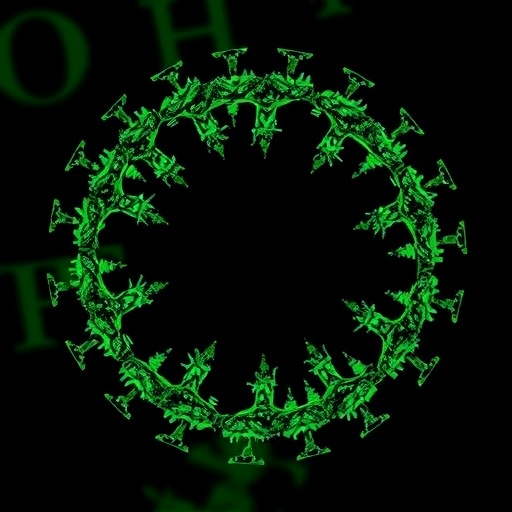In an intriguing development in the field of genomics, researchers have turned their lens toward the PeptideAtlas database to conduct a comprehensive audit that unearths powerful implications of repurposed pseudogenes and co-opted retroviral open reading frames (ORFs). This analysis signifies not only an in-depth investigation into molecular evolution but also highlights the potential of alternative functionalities of genetic sequences that were previously deemed non-coding or redundant. The findings have the potential to reshape the landscape of gene annotation and functional studies within various biological contexts.
Pseudogenes, which are genetic sequences that resemble functional genes but are typically non-expressive, have been historically viewed as remnants of evolutionary pasts or genetic artifacts. However, emerging evidence suggests that these sequences might possess undiscovered functionalities, revealing a complex role in regulatory networks and possibly influencing phenotypic variation. Rodriguez et al. embark on a journey through the PeptideAtlas database, shedding light on the often-overlooked potential of these sequences, indicating that pseudogenes may not be as non-functional as once thought.
One focal point of the research revolves around the concept of repurposed pseudogenes, wherein these once discarded sequences exhibit involvement in biological processes. The audit mapped interactions between certain pseudogenes and functional genes, suggesting a sophisticated regulatory framework within which these sequences operate. Such findings provoke a reevaluation of traditional genetic frameworks and beckon further exploration into their functional roles in various cellular contexts.
The study delves into the co-opted retroviral ORFs, which are segments of genetic material derived from viral infections that may, over evolutionary time scales, be assimilated into the host genome. These sequences occasionally retain functionalities, which can be beneficial to the host organism. For example, some of these ORFs may contribute to immune responses or play roles in the transmission of regulatory signals. The implications of these findings stretch far beyond superficial genetic analysis, as they emphasize the interconnectedness of viral genetics and host biology, a relationship that has evolved through cohabitation and mutual influence.
Through rigorous analysis, Rodriguez et al. uncovered previously unannotated peptides derived from both pseudogenes and co-opted retroviral ORFs in the PeptideAtlas database. This rich repository of protein sequences allowed researchers to identify and catalogue these peptides systematically, providing a new leap in understanding how non-coding regions may give rise to functional entities. This discovery raises critical questions about gene annotation practices and encourages a paradigm shift regarding the significance of genetic sequences previously labeled as non-functional.
In terms of methodology, the researchers employed advanced bioinformatics tools to meticulously cross-reference peptide sequences with existing genomic data. This approach not only strengthened their findings but also illustrated a model for investigating genetic material that could be applied to other databases. The integration of machine learning techniques might further refine the identification of potential gene functions and could break new ground in predictive genomics.
The implications of these discoveries extend beyond fundamental research; they present avenues for clinical applications. Understanding the roles of these pseudogenes and retroviral sequences may offer insights into disease mechanisms, potential therapeutic targets, and the development of novel biomolecular tools. By recognizing that these genetic elements can harbor informative sequences, researchers may advance personalized medicine approaches, tailoring treatments based on a more comprehensive genetic understanding.
These revelations also spark discussions regarding evolutionary biology and the adaptability of genomes in response to environmental pressures. The ability of pseudogenes and retroviral ORFs to evolve functions underscores the resilience of biological systems. These findings catalyze conversations about the evolutionary strategies that organisms deploy—questions that touch on the very fabric of biology and our understanding of life as we know it.
Moreover, the relationship between viruses and their hosts reflects an ancient dance of influence and adaptation. Co-opted retroviral ORFs exemplify this evolutionary interplay, revealing how viral sequences can be repurposed to serve host functions, leading to innovative solutions to biological challenges. The implications of this co-option might allow species to navigate environmental changes and survive selective pressures, underscoring the importance of genomic plasticity.
As the research community continues to recognize the value of previously underestimated genetic elements, there is a compelling case for extensive reevaluation of genomic data. Each pseudogene carries a story—a potential key to unlocking the mysteries of genetic regulation and function. This emphasizes the vital role that databases like PeptideAtlas play in providing a treasure trove of information waiting to be explored and understood.
In conclusion, the audit of the PeptideAtlas database conducted by Rodriguez and colleagues reveals that the genomic landscape is far richer and more interconnected than previously suspected. The evidence of repurposed pseudogenes and co-opted viral ORFs prompts a paradigm shift in how researchers perceive non-coding regions of the genome. Such transformative findings not only advance fundamental scientific knowledge but also provide a vision for the future of genomics, highlighting the necessity for continued exploration of the hidden complexities within our genetic architecture.
As researchers continue to probe the depths of the genome, it becomes increasingly clear that the story of genetic material is not merely one of codes and sequences but rather a tapestry woven from countless evolutionary threads—each with the potential to influence future research, medicinal developments, and our understanding of the biological world.
Subject of Research: Repurposed pseudogenes and co-opted retroviral ORFs in the context of the PeptideAtlas database.
Article Title: An audit of the PeptideAtlas database uncovers evidence for repurposed pseudogenes and co-opted retroviral ORFs.
Article References: Rodriguez, J.M., Maquedano, M., Cerdán-Vélez, D. et al. An audit of the PeptideAtlas database uncovers evidence for repurposed pseudogenes and co-opted retroviral ORFs. BMC Genomics (2025). https://doi.org/10.1186/s12864-025-12238-w
Image Credits: AI Generated
DOI: 10.1186/s12864-025-12238-w
Keywords: Pseudogenes, Retroviral ORFs, PeptideAtlas, Genomic Audit, Molecular Evolution, Functional Genomics, Bioinformatics, Gene Annotation.




